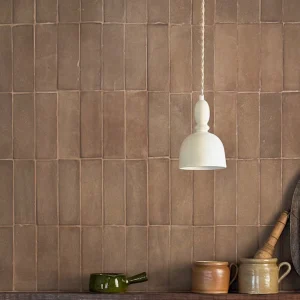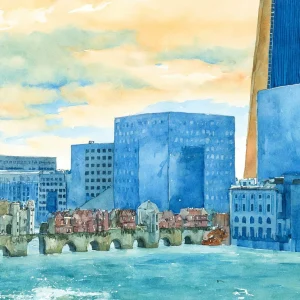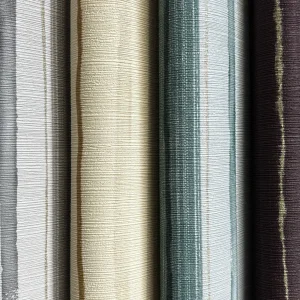
Put together by London-based curator Beatrice Galilee, Afrofuture followed last year’s #Hacked installation, which also brought makers and innovative designers to take over part of the shop-floor of La Rinascente, Milan’s prestigious cathedral of commerce. The world’s most illustrious design and furniture fair is nevertheless overrun by lamps and chairs silently shouting for consideration; against this morass, Afrofuture offered something a bit different. Nixing the option of staging a definitive exhibition of ‘African’ design, Galilee and her collaborators lined up a programme of discussions, presentations and workshops to take place within the transformed space of the department store, challenging audience preconceptions of what it is to be African today, and what that might mean for design.
During Wednesday’s ‘Meet the Afrofuturists’ discussion, the first question that host & writer Nana Ocran put to a panel of designer-debaters was ‘What is an Afropolitan?’. The term, coined by rising literary star Taiye Saelassi, in her seminal essay ‘Bye Bye, Babar/What is Afropolitan’ was succinctly defined by writer Hannah Pool, who had just interviewed Saelassi in the days previous. ‘A generation of Africans, largely in the diaspora, who combine their diasporic lives (living in London, NY, Milan) and also having a personal or professional connection with Africa.’ It seems that so-called, Afropolitans are playing a strong lead in achieving recognition for African Design. This term ‘African Design’ is the most obvious to use when talking about Africa and Design, but the panel criticised its generalisation of a whole continent of designers. And rightly so. As Pool put it; ‘Nigerian is very different to Sudanese. We need to understand that the same as we understand that European design is too broad a term’.
As in the majority of relationships between ‘The West’ and Africa, westerners need to be constantly mindful that they can’t simply land in and ‘fix’ things. The same is true for the design world.
"Bringing in the tools and technology that are needed by Africans to drive design in their respective countries forward is perhaps appropriate. Forcing our ideals on them is not."
As Jennifer Woolfe stated, ‘We have to be careful with the term African design and applying an ‘African Aesthetic’. Let them develop their own design, without appropriating their aesthetics into our own.’
Maker Faire Africa, who staged a workshop on the Thursday of Salone, is providing just this kind of support. Giving African designers the space and equipment to come and experiment with their designs and ideas has helped to nurture an atmosphere of creativity in places such as Lagos and Nairobi. Designer and activist Cyrus Nganga, technologist David Olanyan and design director of Maker Faire Africa, Jennifer Woolfe, engaged visitors by asking them to create digital versions of Nganga’s C-Stunner, glasses using found objects and scrap metal.
Visiting Afrofuture in the context of Salone made it glaringly obvious just how loud Africa, the second largest continent in the world, needs to shout to be heard over the din created by the established super-brands of Italian and Dutch design. Yet without the customary spectacle of an exhibition of objects to criticise or applaud, Afrofuture succeeded in creating a more lasting legacy. In the coming years, stands emblazoned with ‘Kenyan Design’, or ‘Nigerian design’ could well become standard at events like the Salone. Or perhaps the designers of Africa won’t have to travel quite as far as Milan; perhaps in this Afrofuture, the stage will have moved considerably closer to home.
Afrofuture
La Rinascente, Milan
9-14 April 2013
www.afrofuture.it
Enya Moore





